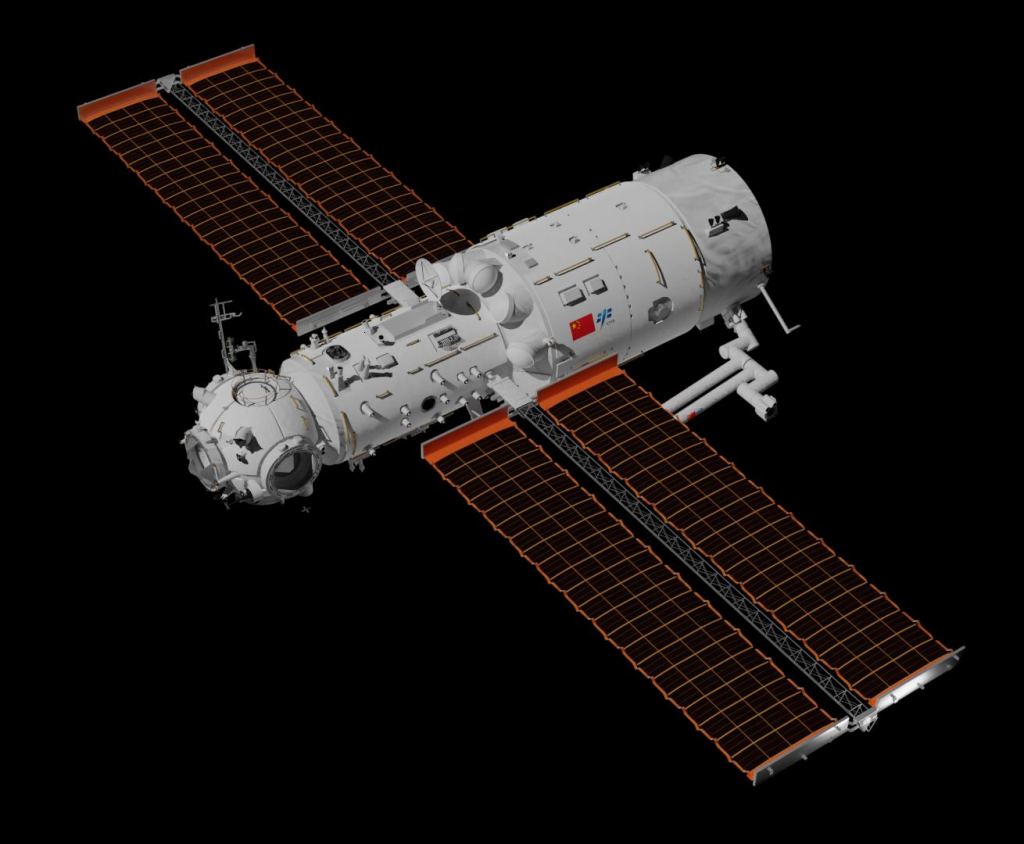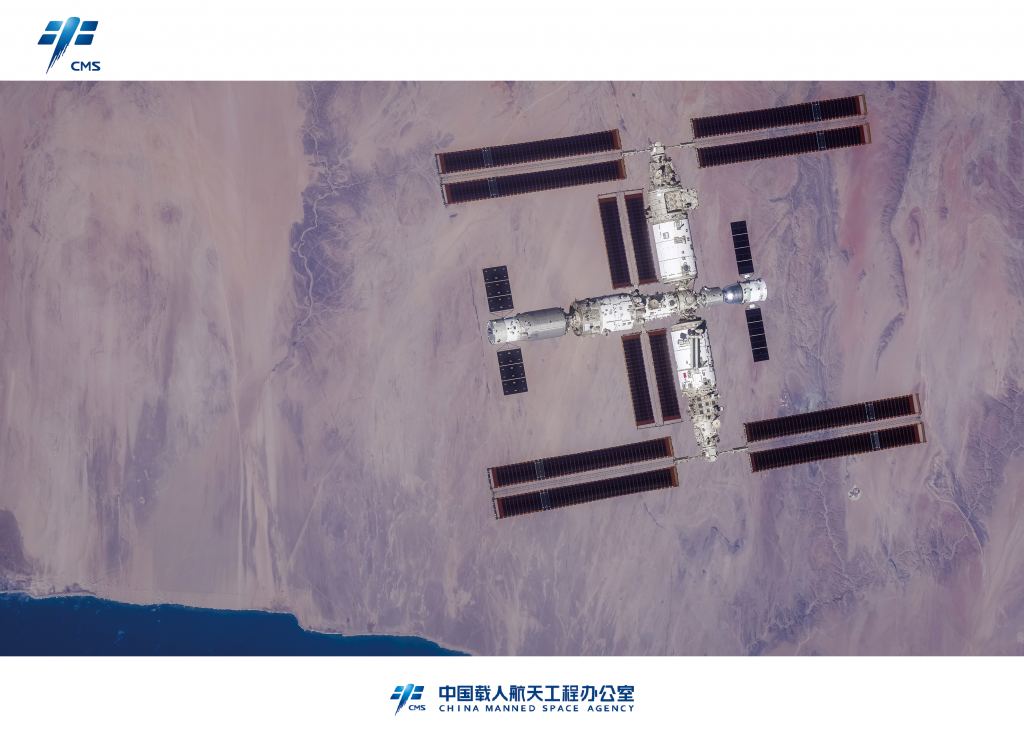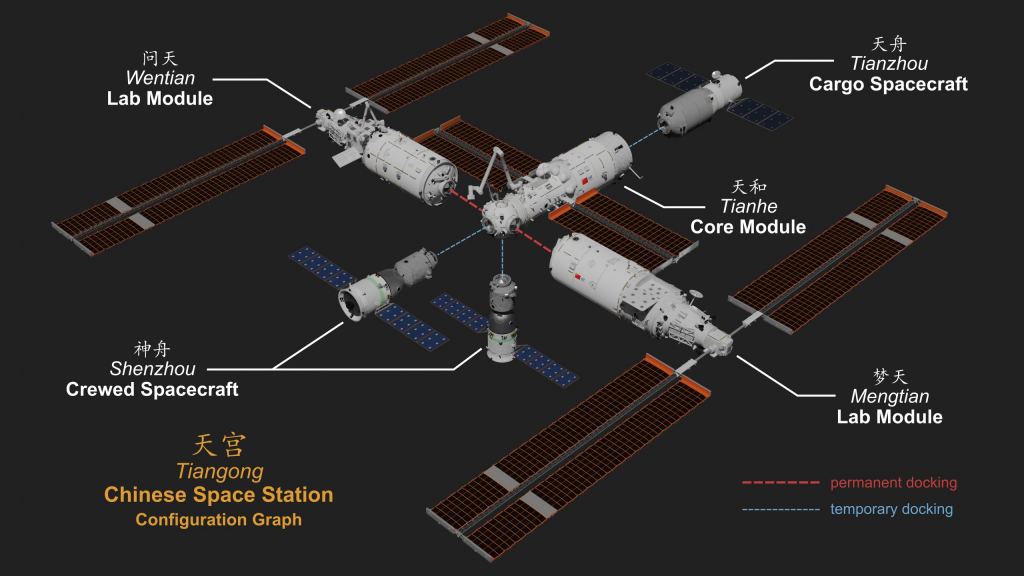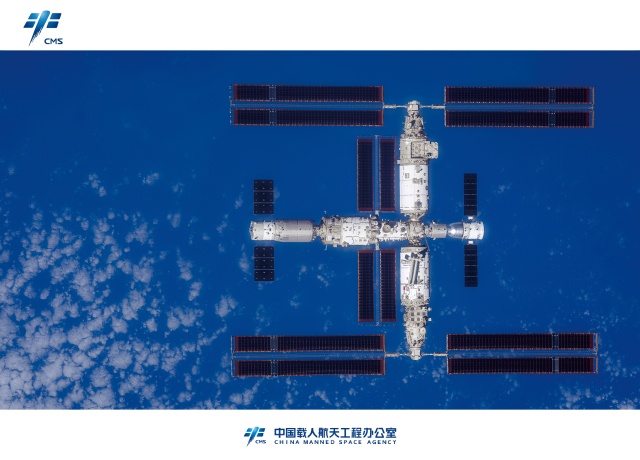When the Space Age dawned in 1957, there were only two players: the USA and the USSR. The USA won the space race by being first to the Moon, though the USSR enjoyed its own successes. But here we are only a few decades later, and the USSR appears to be fading away while China is surging ahead.
Nothing’s more emblematic of China’s surge than its Tiangong space station.
China is sometimes secretive about its space activities. But not when it comes to Tiangong. China is sharing some images of the space station captured by their taikonauts on Shenzhou-16. Shenzhou is the spacecraft that transports crew to and from the space station, and 16 is the current mission.
“It has made history by realizing the Chinese nation’s millennium-long dream of flying to the stars, of which we, as Chinese, are all profoundly proud.”
John Lee, Chief Executive of the Hong Kong Special Administrative Region
These are our first high-resolution images of Tiangong, and the China Manned Space Agency released them at a press conference on Tuesday, November 28th.
China began launching different modules to the space station in 2021, starting with the Tianhe core module. Tianhe provides life support and living quarters for the space station’s crew, as well as navigation, guidance, and orientation for the station.

Three more modules follow the Tianhe core: Wentian (2022), Mengtian (2022), and Xuntian in 2024. Wentian contains a laboratory and also fulfills other functions. Mengtian also contains research facilities, while Xuntian is the Chinese Survey Space Telescope (CSST). The CSST is an optical-ultraviolet telescope that China says will outperform the Hubble.
The CSST will co-orbit with Tiangong and will periodically dock with the space station.

The China Manned Space Agency (CMSA) released the images at a press conference in Hong Kong. At the conference, the Chief Executive of the Hong Kong Special Administrative Region, John Lee, spoke about the CMSA and Tiangong.
“It has made history by realizing the Chinese nation’s millennium-long dream of flying to the stars, of which we, as Chinese, are all profoundly proud. Through the delegation’s visit, Hong Kong people can share the nation’s pride in China’s manned space development from close range and develop a deeper understanding of the country’s developments in aerospace technologies. The visit exemplifies the affection and support of the Central People’s Government for the Hong Kong Special Administrative Region,” Lee said.

China needs its own space station in part because the US Congress banned China from playing any role in the ISS. In fact, Congress prohibited any official American contact with the entire Chinese space program. That was due to “National Security” concerns, which often means spying but could mean anything. So, China built their own.
China’s list of reasons for building a space station mirrors any nation’s list of reasons: to gain experience in spacecraft rendezvous, permanent human operations in orbit, long-term autonomous spaceflight of the space station, regenerative life support technology and autonomous cargo and fuel supply technology. It’s also a platform for developing technologies for further exploration of the Solar System.

China is inviting private space companies to take part in the Tiangong mission to help drive innovation and the development of their own space industry. They’re also considering space tourism.
Yang Liwei, China’s first taikonaut in space, says it’s just a matter of time before tourists will be able to visit Tiangong. “It is not a matter of technology but of demand,” Yang told Chinese media last year. “And it can be realized within a decade as long as there is such demand.”
For there to be space tourists, there have to be people with a lot of money. But communism is supposed to prevent the accumulation of wealth, and everything is supposed to belong to everyone. But that’s a political discussion.
China has earned the right to boast about and enjoy its success. Decades ago, during the space race, China was mired in trouble. The Cultural Revolution was in full swing, and Mao Zedong was purging the remnants of capitalism from China. There was chaos, armed struggles, and political upheaval.
Fast forward to now, and China, for all intents and purposes, is a different country. It’s an industrial and economic powerhouse, and we have to acknowledge that space is open to all nations with the resources to reach it. China is making great strides with Tiangong and all their other efforts aimed at the Moon and Mars. Once they have their own space telescope, will they really be playing catch up anymore?
The space race between the USA and the USSR helped define the age we live in. But the page has turned on that. Now it’s the USA and China that are vying for supremacy.
Tiangong is not only a symbol of China’s rise, but a functioning technological artifact of it.

